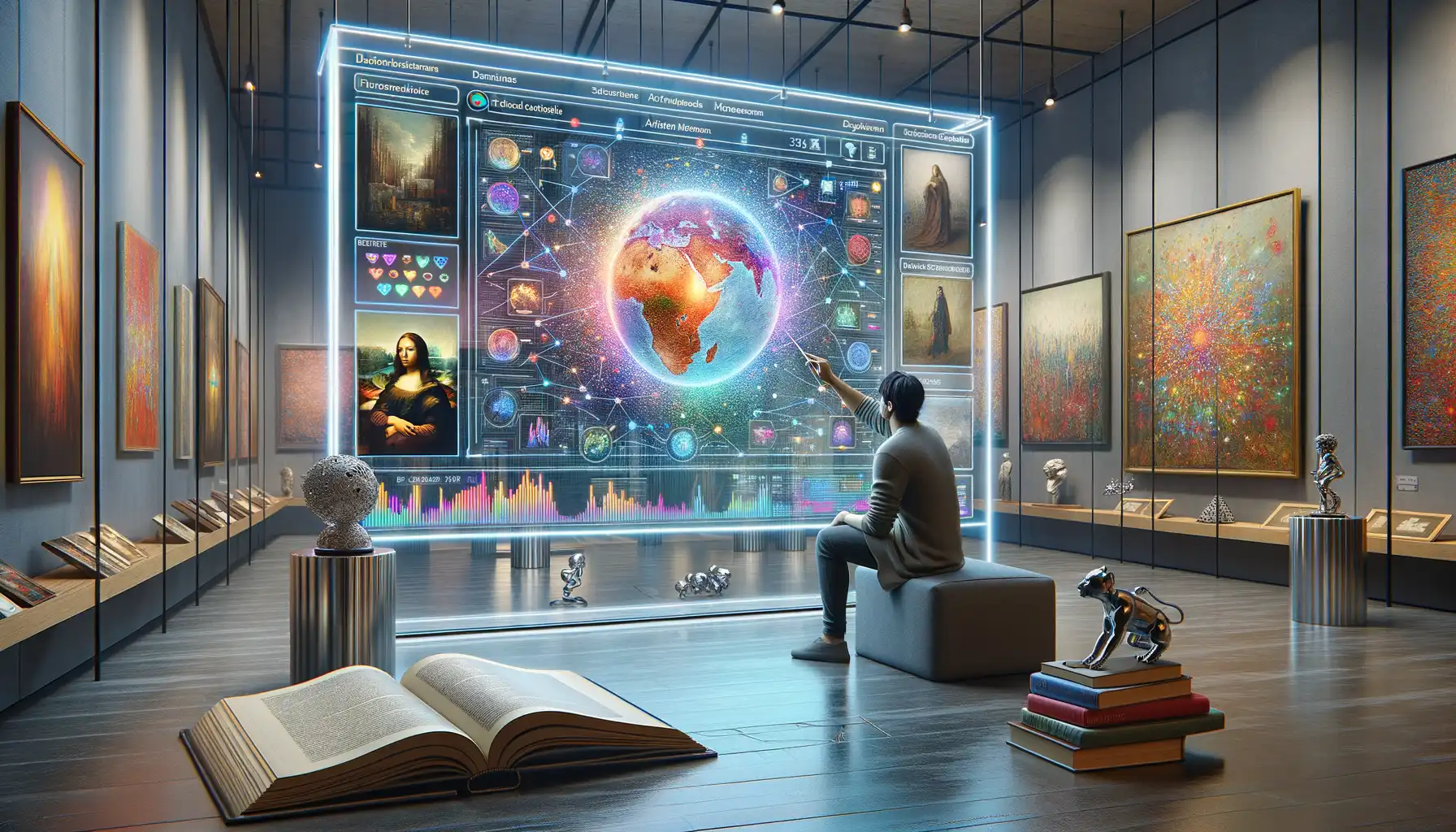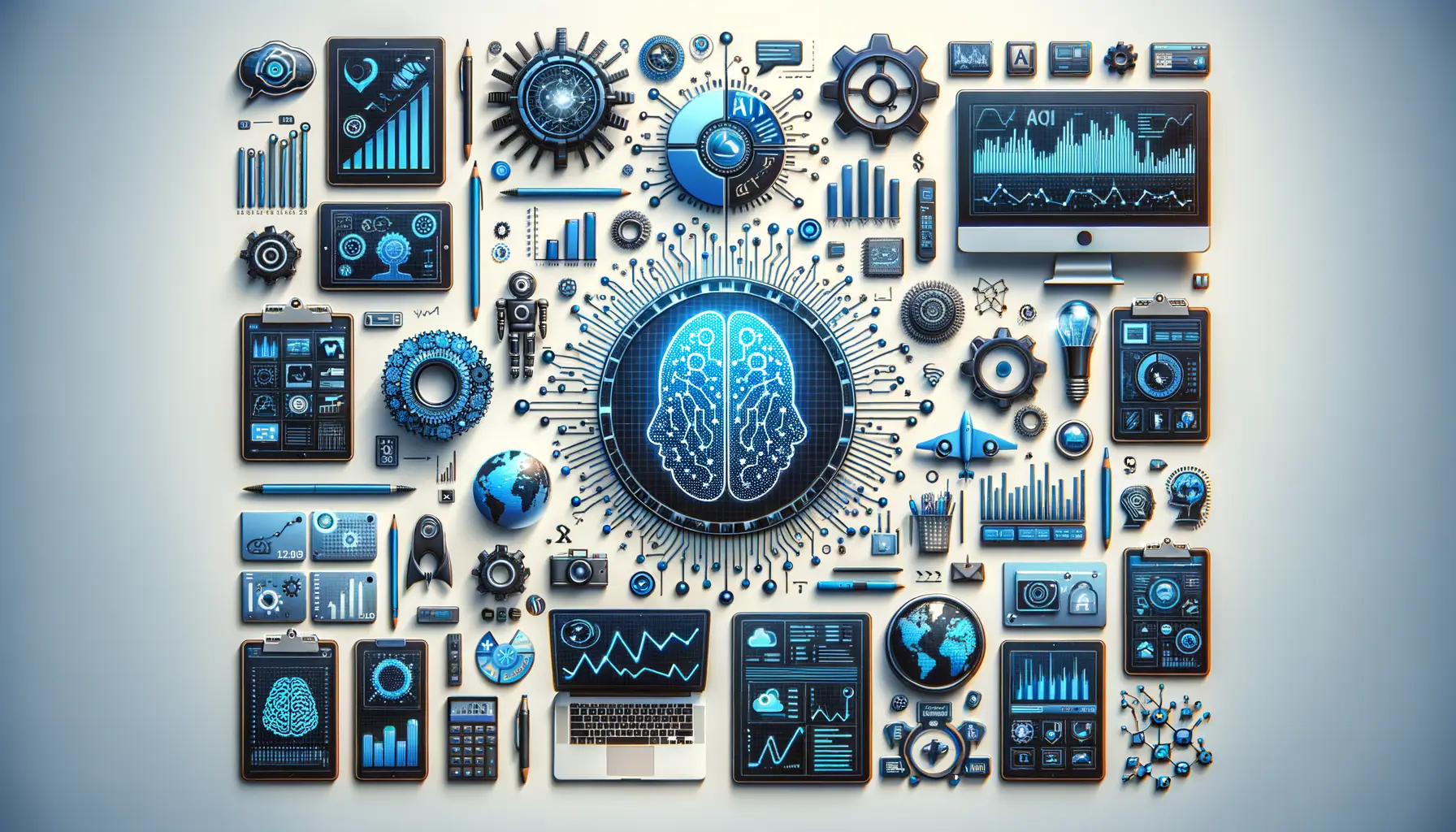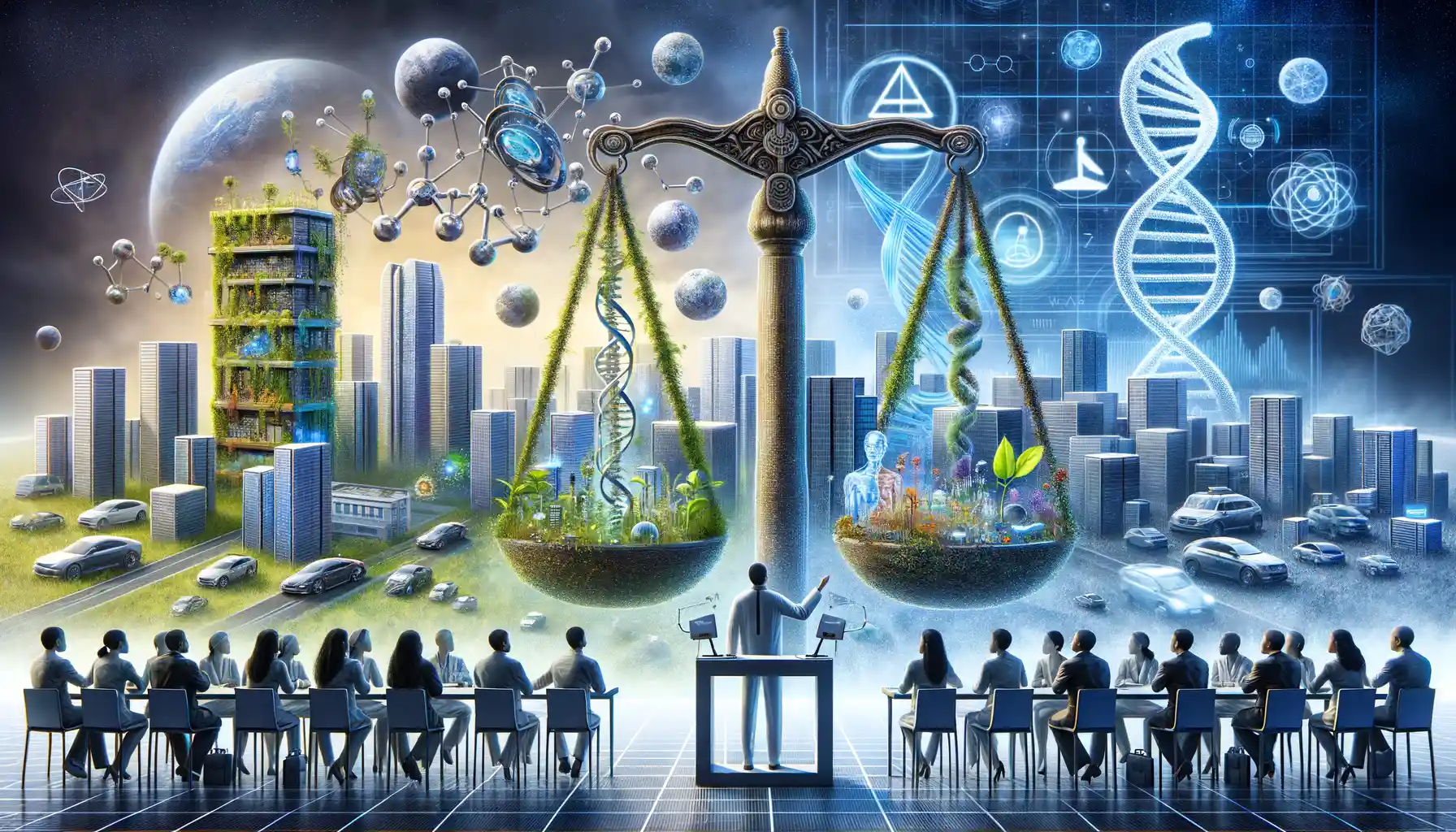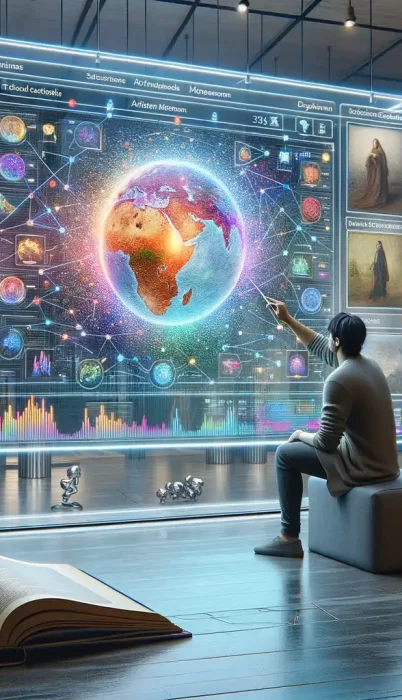Introduction to AI in Analyzing Artistic Trends
Imagine wandering through a gallery filled with the pulsating energy of modern art. Now think about this: what if there were an invisible force behind the scenes, quietly identifying the next bold stroke, groundbreaking installation, or viral aesthetic? That force is AI, and it’s revolutionizing how we conquer the elusive world of artistic trends.
The Magic of AI: Uncovering Connections Humans Miss
Art trends are like whispers in a crowded room—half-heard yet tantalizing. Thanks to advanced machine learning algorithms, AI can pick up on those faint murmurs and turn them into symphonies of insight. It sifts through millions of social media posts, spotting patterns that would take humans months (or years!) to unravel. Think of it as having a cosmic curator at your side, analyzing hashtags, image styles, and cultural moments.
For instance, remember when the vaporwave aesthetic seemed to pop up everywhere overnight? That wasn’t magic—it was virality magnified by platforms like Instagram and Pinterest. AI would have seen it coming by tracking spikes in neon-pink gradients, retro-futuristic videos, and even music playlists before anyone else caught on.
Where Data Meets Creative Instinct
But let’s not forget the human touch. AI isn’t here to replace artists, critics, or curators—it’s here to spark collaboration. Here’s how it transforms raw social data into something meaningful:
- Visual Categorization: AI groups trending imagery into themes like “minimalist abstraction” or “neo-surrealism.”
- Emotion Analysis: By studying captions and comments, it captures how specific art forms resonate emotionally.
- Time Mapping: It tracks how these trends grow, shift, or fade across regions and demographics.
All of this means we’re not just chasing trends anymore—we’re anticipating them, like surfers angling to catch a perfect wave.
How Social Media Data Shapes Art Recognition

The Pulse of Artistic Trends in a Digital World
Art no longer exists in an isolated bubble. With the rise of social media, inspiration flows as freely as a viral video. Platforms like Instagram, TikTok, and Pinterest have become modern-day galleries where creators exhibit their work to millions. But here’s the twist: these platforms don’t just showcase art; they shape its trajectory.
Every time you double-tap on a painting or share a mesmerizing illustration, algorithms take note. What colors are catching your eye? Which aesthetic themes are you obsessed with this month? These digital breadcrumbs create a sprawling map of creative preferences that AI tools eagerly decode. The result? It’s not just about individual posts anymore—it’s how entire trends are born and evolve.
Each click, like, and comment feeds into a tapestry of modern taste, influencing museums, galleries, and even how artists approach their craft. The way we see and celebrate art has quite literally been rewired by the rhythm of our scrolling thumbs.
Your Voice in the Global Art Conversation
Think of it this way: every opinion you share online is a brushstroke in the larger picture of cultural expression. Someone snaps a photo of street art in Berlin; it trends globally within hours. A bold animation from a small indie creator in Mexico becomes a sensation overnight. This interconnected swirl of voices means one thing—*you* are part of the story.
The fascinating part? Social media doesn’t just elevate familiar art forms; it champions the underdogs. Ever notice the rise of hyper-niche trends, like intricate clay miniatures or glitchcore digital edits? AI-driven analysis ensures these smaller movements get their moment in the sun. As viewers amplify them through shares and reposts, they snowball into full-blown global fascinations.
In this fast-paced environment, where algorithms dance to the tune of human engagement, creativity and recognition are inextricably linked. Social media isn’t just a platform—it’s the curator, gallery, and critic all rolled into one.
AI Tools and Techniques for Monitoring Trends

Unleashing AI for Spotting Artistic Waves
Picture this: the digital world is an endless gallery, with new trends blooming every second. Keeping up feels like chasing fireflies in the dark, right? Enter AI tools—your sharp-eyed scout in the midst of this ever-changing artistic jungle. These aren’t just your basic algorithms; they’re like treasure hunters armed with precision maps.
Take natural language processing (NLP), for instance. It doesn’t just skim captions or hashtags on social media—it dives deep, decoding the emotions behind what people share about art installations or street murals. Combine that with image recognition, and suddenly, you have AI identifying which color palettes or visual styles are stealing the spotlight.
With these dynamic AI techniques, you don’t just observe trends—you ride their crest before they crash onto the shores of popular culture.
Case Studies: Success Stories in Artistic Trend Tracking
![]()
From Brushstrokes to Blockbusters: Real Stories of Trendsetters
Picture this: a struggling painter posts a series of vibrant, abstract works on Instagram. They tag their posts with hashtags like #NeoImpressionism and #ModernMood. Thanks to AI-powered trend analysis, these tags explode across platforms, catching the attention of galleries and eventually launching the artist into international fame. This isn’t just a fairy tale – it’s the magic of data meeting art.
Using tools like sentiment analysis and visual recognition, AI uncovers which themes, colors, or formats are resonating most with audiences. For instance, when a filmmaker tapped into social media buzz around “retro-SciFi aesthetics” (think neon-soaked cityscapes), their indie production became a beloved cult classic in under six months.
- An unknown street artist goes viral after AI spots their work being shared alongside trending keywords like “urban decay” and “eco-revolution.”
- An online ceramicist shifts from earthy tones to cobalt blue after it dominates conversations tracked by AI.
These aren’t just case studies – they’re proof that understanding audience sensibilities through tech is like finding the secret map to a treasure trove, where art meets opportunity.
Future Prospects and Ethical Considerations

Peering Into Tomorrow’s Creative Lens
The fusion of *art* and *AI* brings a thrilling whirlwind of possibilities, doesn’t it? Imagine a world where algorithms predict the next big artistic wave before your favorite gallery even catches on. With AI-powered social media analysis, that future feels closer than ever. Think of how movements like *glitch art* or *cyberpunk aesthetics* could be detected at their earliest sparks, giving underground creators a louder voice and a chance to shine.
But do we risk over-filtering creativity? If AI systems only track what’s “trending,” what happens to outliers—the daring rebels shaping tomorrow’s paradigms in silence? This raises questions about balance: Should these tools amplify *every voice* or just the loudest ones?
- Could AI inadvertently create echo chambers in creativity?
- What biases might linger in the data it analyzes?
The Heartbeat of Ethical Innovation
Ethics isn’t just a footnote here—it’s the soul of this dialogue. While we celebrate AI’s ability to decode cultural shifts, we must tread carefully. Who owns the insights mined from countless Instagram posts or Pinterest boards? Are artists—whose work inspires that data—getting the credit they deserve? And most importantly, how do we safeguard privacy in this treasure hunt of trends?
Consider this: an emerging artist from São Paulo uploads experimental graffiti online. Moments later, an AI identifies it as groundbreaking—but does that artist get *their* recognition, or does the system dilute their story into raw numbers? Tools like these are powerful, but wielded without thought, they risk erasing the very humanity they seek to map.
